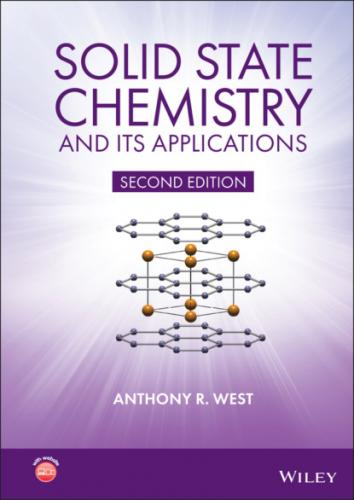16 8 Electrical Properties 8.1 Survey of Electrical Properties and Electrical Materials 8.2 Metallic Conductivity 8.3 Superconductivity 8.4 Semiconductivity 8.5 Ionic Conductivity 8.6 Dielectric Materials 8.7 Ferroelectrics 8.8 Pyroelectrics 8.9 Piezoelectrics 8.10 Applications of Ferro‐, Pyro‐ and Piezoelectrics
17 9 Magnetic Properties 9.1 Physical Properties 9.2 Magnetic Materials, their Structures and Properties 9.3 Applications: Structure–Property Relations 9.4 Recent Developments
18 10 Optical Properties: Luminescence, Lasers and Transparent Conductors 10.1 Visible Light and the Electromagnetic Spectrum 10.2 Sources of Light, Thermal Sources, Black Body Radiation and Electronic Transitions 10.3 Scattering Processes: Reflection, Diffraction and Interference 10.4 Luminescence and Phosphors 10.5 Configurational Coordinate Model 10.6 Some Phosphor Materials 10.7 Anti‐Stokes Phosphors 10.8 Stimulated Emission, Amplification of Light and Lasers 10.9 Photodetectors 10.10 Fibre‐Optics 10.11 Solar Cells and Photovoltaics 10.12 Transparent Conducting Oxides, TCOs, Smart Windows and Energy Management of Buildings 10.13 Photonic Crystals, Photonic Bandgaps and Opals
19 11 Heterogeneous Materials, Electroceramics and Impedance Spectroscopy 11.1 Homogeneous and Heterogeneous Solids 11.2 Resistivities and Permittivities of Materials; The Parallel RC Element 11.3 Impedance Formalisms, Alternating Currents and Equivalent Circuits 11.4 Applications of Impedance Spectroscopy
20 12 Thermal and Thermoelectric Properties 12.1 Thermoelectric Effects 12.2 Thermal Properties: Heat Capacity, Thermal Conductivity, Thermal Expansion
21 13 Functional Materials: Some Important Examples 13.1 TiO2: Rutile, Anatase and Other Ti–O Phases 13.2 Ca12Al14O33 , Mayenite: An Oxide Ion Conductor, Component of Cement and a Superconducting Electride 13.3 Zinc Oxide, ZnO for Varistor and Optoelectronic Applications 13.4 Two‐dimensional Structures: MXenes 13.5 Low‐dimensional Solids: Graphene, BN, Transition Metal Dichalcogenides and Black Phosphorus
22 14 Glass 14.1 Factors That Influence Glass Formation 14.2 Thermodynamics of Glass Formation; the Behaviour of Liquids on Cooling 14.3 Kinetics of Crystallisation and Glass Formation 14.4 Structure of Glasses 14.5 Liquid Immiscibility and Phase Separation in Glasses 14.6 Viscosity of Glasses and Melts 14.7 Electrical (Ionic) Conductivity of Glass and the Mixed Alkali Effect 14.8 Bonds, Bands and Semiconducting Glasses 14.9 Mechanical Properties and Strengthening of Glass 14.10 Commercial Silicate and Borate Glasses 14.11 Metallic Glasses 14.12 Fluoride Glasses 14.13 Glass‐Ceramics 14.14 Bioglasses
23 15 Structural Materials: Cement, Refractories and Structural Ceramics 15.1 Cements 15.2 Refractories and Structural Ceramics
24 16 Oxides of the Elements, Their Properties and Uses 16.1 Oxides of s‐Block Elements 16.2 Acid‐Base Classification of Oxides 16.3 Oxides of p‐Block Elements 16.4 Oxides of d‐block (Transition) Elements 16.5 Oxides of Lanthanides and Actinides
